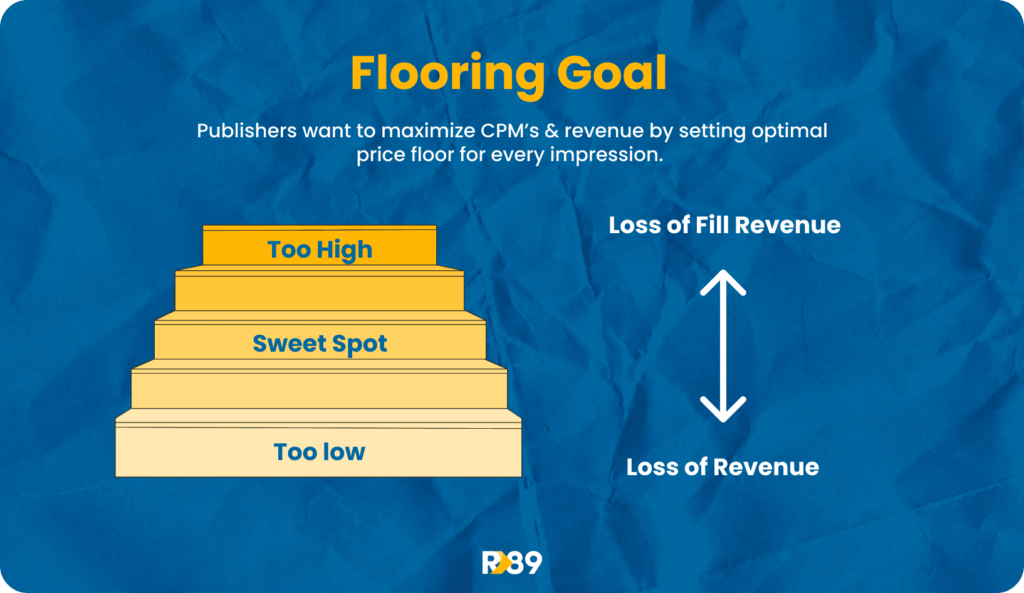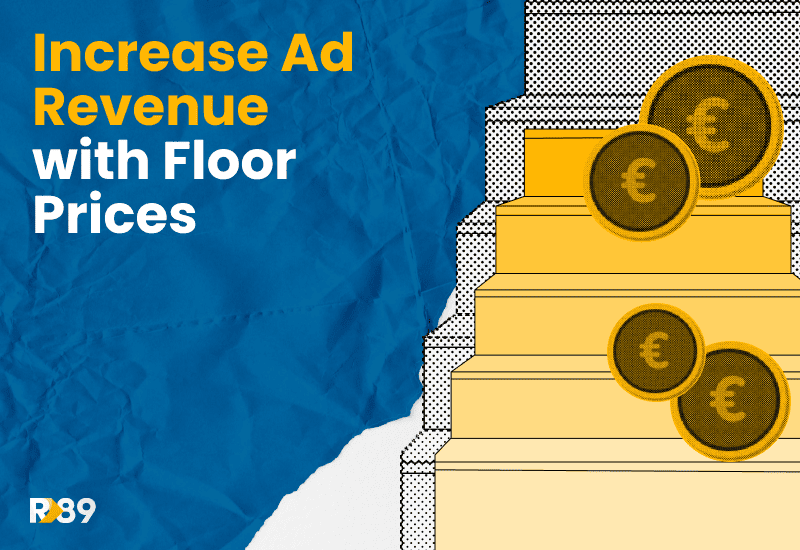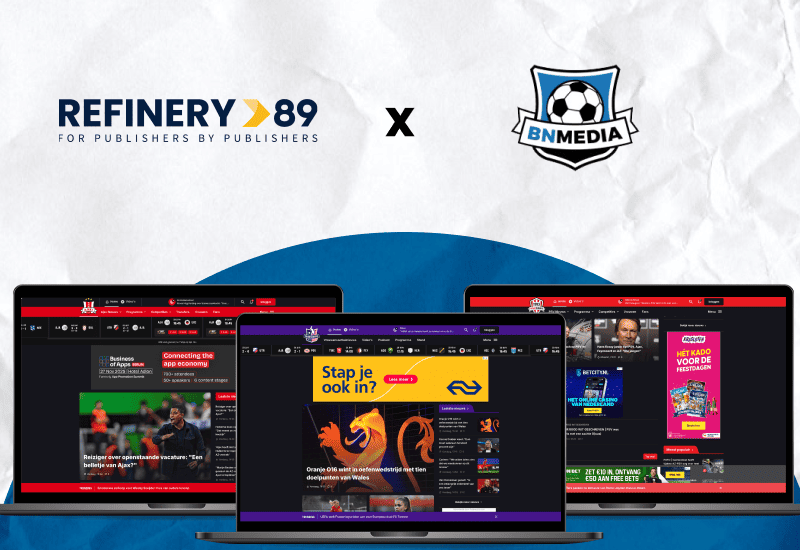When it comes to the fill rate on your website, which is the ratio of ad requests to ads displayed, you might think you want a 100% fill rate because that means you’re always showing ads, which translates to making money from them, right? But that’s not always the case, because in reality, you may be losing money. But don’t worry, let’s take a closer look at floor pricing, what it is, how it can affect your fill rate, and how you can optimize it to get a revenue boost.
Optimizing Floor Pricing for your website
What is floor price?
Floor price in programmatic advertising means establishing a minimum auction price for your ads spaces on the SSP via the bid request. This means that during the bid, only those who are willing to pay above your set minimum price, will be able to place their ads on your website.
Let’s put it this way. Imagine you have a gaming website and your URL is… umm… thegamesareawesome.com (yeah, very original right?) and you set the floor price at $1.00CPM. Only those advertisers who are willing to pay $1.00 or more per thousand impressions can purchase that ad space
In other words, the floor price is the value below which an ad cannot be sold on an ad server.
How can floor pricing impact your fill rate?
Before we answer this question, we need to be familiar with the term Yield Management. Ring any bells? No worries, let us explain.
Yield Management, in the words of Robin de Wit (our CSO here at Refinery) is:
“The art of balancing pricing rules to maximize a publishers’ revenue. It is about finding that sweet spot between CPM and fill rate for a particular ad stack.”

Now back to floor pricing. Raising a floor price typically results in higher CPMs. So, why don’t all publishers set a $20 price floor for their ad space to drive CPMs up significantly? The key reason is: Fill Rate.
Ad fill rate helps us understand how effectively we’re displaying ads. We calculate it by taking the number of ads displayed and dividing it by the number of ad requests. The resulting percentage shows how often we successfully fill ad spaces with ads.
If you set a floor price too high, then probably your fill rate will drop a lot. The fill rate can vary depending on different factors: Ad blockers, ad quality, high floor prices, technical errors and latency.
Although CPM and Fill Rate are vital metrics for measuring display advertising performance, the most important metric to keep in mind is total revenue.
Revenue is the king of kings, and you can get a higher revenue even if your fill rate is lower when setting the floor price, because you are getting more money with each impression.
How can you optimize your floor pricing strategy?
With competitors willing to pay more, you are guaranteed a higher payout each time an ad is displayed, or at least no lower than the minimum price set.
Now that you understand the importance of finding the right balance between CPM, fill rate and revenue, how can you determine what will work for you?
Experimenting with different floor prices per GEO location, unit, ad placement and device can take time and requires experience. We, at Refinery89, help our publishers through our team of experts and advanced technology to successfully help you get higher revenue with ads.
Stress less, get more. Increase your revenue with floor pricing optimization with us!
Book your free expert consultation today with an official Google Certified Publishing Partner and let our team help you take your advertising revenue to the next level. Get in touch now!








